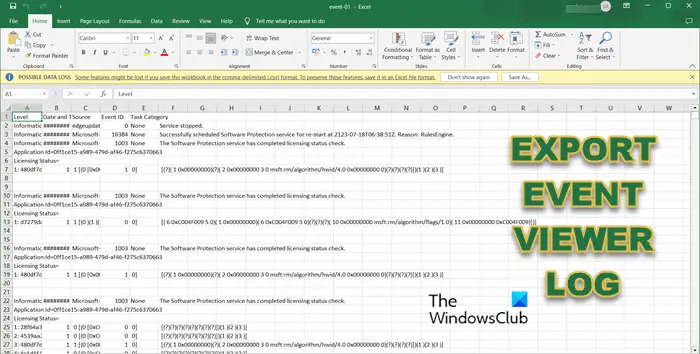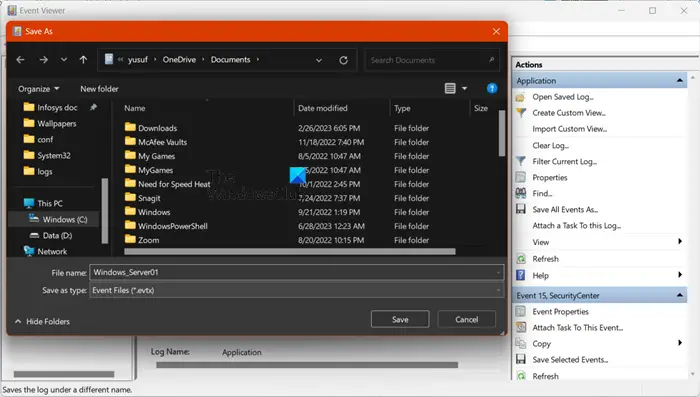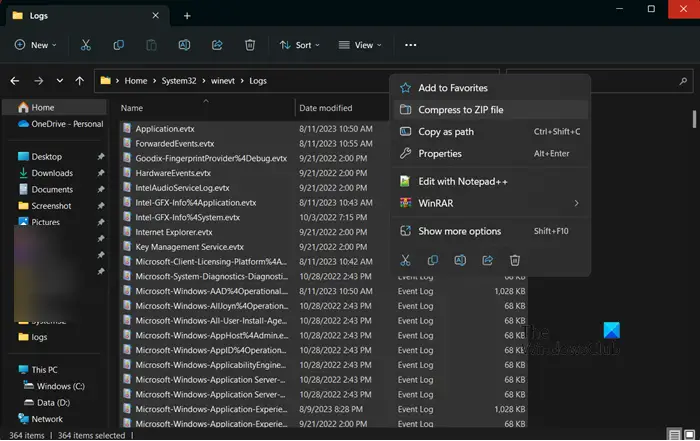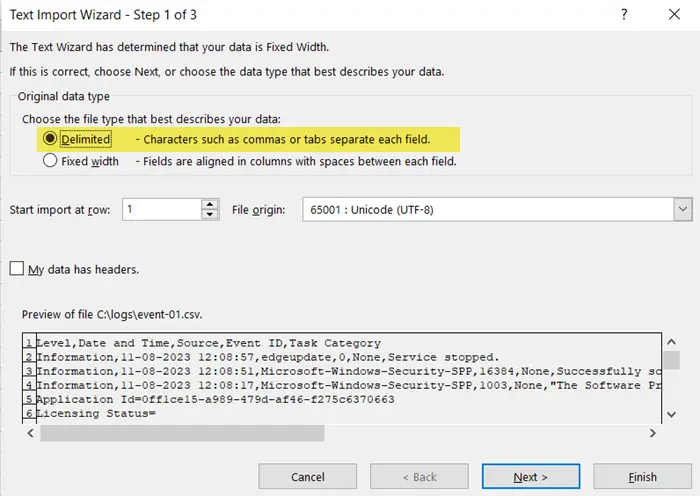Event Viewer in Windows creates a record of events that occurred on your computer. So, let’s say an application fails to start for some reason; the Event Viewer will capture it and create a log. In this post, we will see how you can export Event Viewer logs.

Export Event Viewer Logs in Windows 11/10
There are various formats into which you can export the Event Viewer Logs. We have mentioned some of the most common ones below.
- Export Event Viewer Logs into .evtx, .XML, .csv and .txt files
- Export Event Viewer Logs into ZIP file
- Export Event Viewer Logs to Excel
Let us talk about them in detail.
1] Export Event Viewer Logs into .evtx, .XML, .csv and .txt files

Even though all these formats, .evtx, .XML, .csv and .txt, are different from one another, they all share the same procedure. Therefore, if you want to export your logs into any of the mentioned files, follow the below steps.
- Open Event Viewer by searching it out of the Start Menu.
- Look for the log that you want to export and select it.
- Now, from the right panel under the Actions tab, click on Save All Events As.
- Navigate to the location where you want to store the file and give it a name; we would recommend naming the file thoughtfully; you can name it in the syntax, Logtype_Servername. Here, Logtype will be the type of log you are exporting and Servername will be the server to which you plan to export.
- Finally, select the extension from Save as type drop-down menu and select Save.
Now, you can go to the location you mentioned to find the log file.
2] Export Event Viewer Logs into ZIP file

You can create a zip of all the logs or some particular log on your computer. Even though the Event Viewer app doesn’t have the option to do the same, we have a workaround that will most certainly work for you. To convert your logs into ZIP files, open File Explorer and go to the following location.
C:WindowsSystem32winevtLogs
Now, select the logs that you want to export, right-click on them, and select Compress to ZIP file.
In case you get File not found or No read permission, you need to change the permission of the Logs folder. For that, click on winevt from the address bar. Now, right-click on the Logs folder and click on Properties. Go to the Security tab, select a user, and click on Edit.
Finally, select the box associated with Full Control and click Apply > Ok. You can compress all the log files with the same technique.
Read: How to create Custom Views in Event Viewer
3] Export Event Viewer Logs to Excel

Finally, let us see how to export logs into Excel. The option to export logs is not natively available in Event Viewer, but we can still do it by using the steps mentioned below.
- Open Event Viewer.
- Go to the log(s) you want to export and select them.
- Now, click on Save All Events As and save the file in CSV (Command Separated) format.
- Open Excel.
- Click on Open, go to the location where you have stored the log file, and open it.
- This will launch Text Import Wizard, click on Delimited, and then on Next.
- Check the box next to the Comma and untick the one next to Tab and then click on Next.
- Select General and click on Finish.
- This will import the log file onto the Excel spreadsheet.
- Now, click on Data > Sort > Expand the selection > Sort.
- In Sort by, you must select Event ID and follow the on-screen instructions to sort the data however you want.
Hopefully, you can export logs using any of the methods mentioned earlier.
Also Read: How to clear the Event Log in Windows
Where are the Event Viewer logs stored in Windows 11?
Windows stores its Event Viewer’s logs in C:WINDOWSsystem32config. You can open File Explorer and navigate to that location to access the log files. You can also store particular log files in different locations and in different formats. To know how to do the same, check out the aforementioned guide.
Read: Fix Event Viewer Log missing
How do I pull event logs in Windows 11?
To access Event Logs, open Event Viewer by searching it out of the Start Menu. Next, you need to expand multiple folders placed on the left panel to navigate to your log. To view any log, just double-click on it and you will get all of its details.
